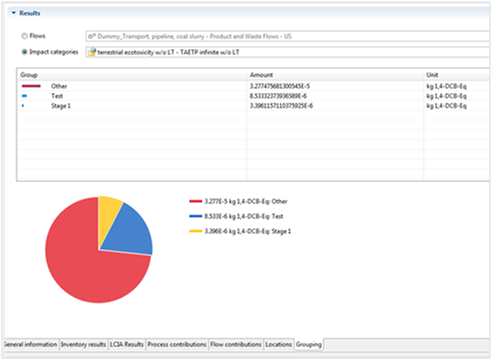

- #Openlca general information how to#
- #Openlca general information manual#
- #Openlca general information software#
The human toxicity impact of the chemicals is characterized and presented in Disability-Adjusted Life Years (DALY) per kg emitted substance. The emitted chemicals are identified and quantified as the ratio of chemicals present. The embedded toxicity in materials, such as concrete, wood, clay, straw, and wood fibreboard, is extracted with Solid Phase Micro Extraction before being analyzed with gas chromatography-mass spectrometry (GC-MS). The embedded toxicity only affects the people, who are in contact with the product from when it is created until disposal thereby value chain wise including only the use stage, and therefore the users are primarily affected. Another way to assess the toxicity is by the embedded toxicity, which is a new concept, that have been defined in this thesis as the toxicity contained within a product or entity providing a service. The toxicity impact of building materials can be assessed as the toxicological footprint throughout the value chain of a product or entity providing a service, where all emissions occurring are included, which is a term known as embodied toxicity. However, the reuse and recycling of construction materials also create an issue, since toxic chemicals can be emitted to the environment, which could lead to human health problems such as allergies, reproduction impairment and cancer. The sector is one of the largest resource consumers, where the sectorial waste constitutes one-third of all waste products in Europe. The change from a linear economy to a circular economy has become even more urgent in the last decades for the construction sector, due to rapid urbanization, increasing population and resource depletion. ^ v1.2 uses v1.Master Thesis - Environmental Engineering - 2020
#Openlca general information manual#
More information on these indicators is available in the User Manual for the SMM Prioritization Tools. § ACID = Acid Rain, CCDD = Commercial Construction and Demolition Debris, CMSW = Commercial Municipal Solid Waste, CRHW = Commercial RCRA Hazardous Waste, ENRG = Energy Use, ETOX =įreshwater Aquatic Ecotoxicity, EUTR = Eutrophication, GHG = Greenhouse Gases, HAPS = Hazardous Air Pollutants, HCAN = Human Health - Cancer, HNCN = Human Health - Noncancer, HRSP = Human Health - Respiratory Effects, HTOX = Human Health Toxicity, JOBS = Jobs Supported, LAND = Land Use, METL = Metals, MNRL = Minerals and Metals Use, NNRG = Nonrenewable Energy Use, OZON = Ozone Depletion, PEST = Pesticides, RNRG = Renewable Energy Use, SMOG = Smog Formation, VADD = Value Added, WATR = Water Use. * Commodity (goods and services) or industry See indicators in elementary flows and indicators Model VersionsĪCID, CCDD, CMSW, CRHW, ENRG, ETOX, EUTR, GHG, HAPS, HCAN, HNCN, HRSP, HTOX, JOBS, LAND, MNRL, NNRG, OZON, PEST, RNRG, SMOG, VADD, WATRĪCID, CCDD, CMSW, CRHW, ENRG, ETOX, EUTR, GHG, HAPS, HCAN, HNCN, HRSP, HTOX, JOBS, LAND, METL, MNRL, NNRG, OZON, PEST, RNRG, SMOG, VADD, WATR Other presentations, papers and reports about USEEIO are available in the EPA Science Inventory. Journal of cleaner production, 158, 308-318. USEEIO: A new and transparent United States environmentally-extended input-output model. USEEIO: a New and Transparent United States Environmentally-Extended Input-Output Model Citation The primary documentation is available as a manuscript:
#Openlca general information how to#
How to connect to the USEEIO API- USEEIO API documentation- USEEIO API source code Documentation

Model results and components are available for dynamic use in applications via the USEEIO API. The model source code is the USEEIO Modeling Framework .
#Openlca general information software#
Availabilityĭata products (Excel) and an LCA software compatible version are available on . USEEIO is one form of a life cycle assessment model. These tables are paired with environmental data on resource use and releases of pollutants from various public sources in the form of satellite tables, as well as indicators of potential environmental and economic impact, using standard algorithms from input-output analysis. The models use data on inputs to and outputs from industries and their final consumption and value added in the form of input-output tables from the Bureau of Economic Analysis. US Environmentally-Extended Input-Output (USEEIO) models are combined economic-environmental models.

Technical Considerations, Current Versions, and Other Resources


 0 kommentar(er)
0 kommentar(er)
